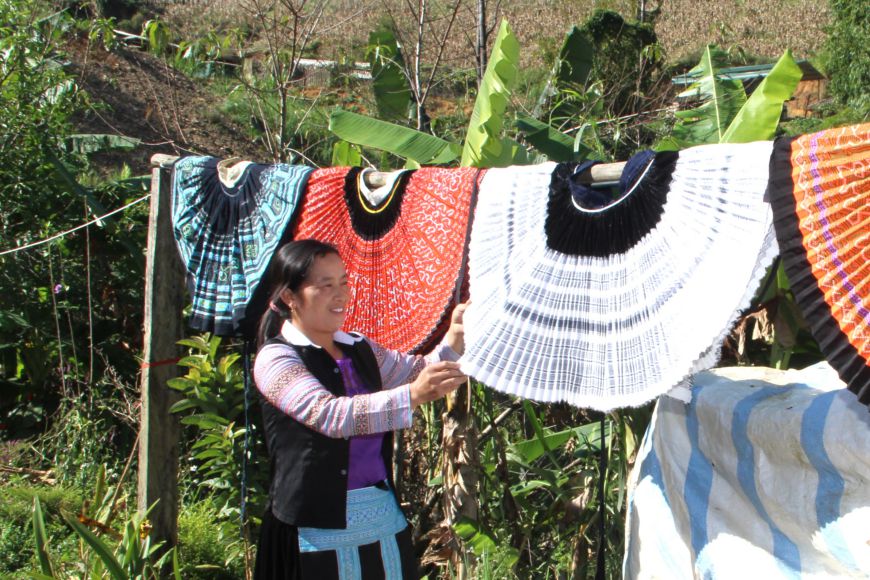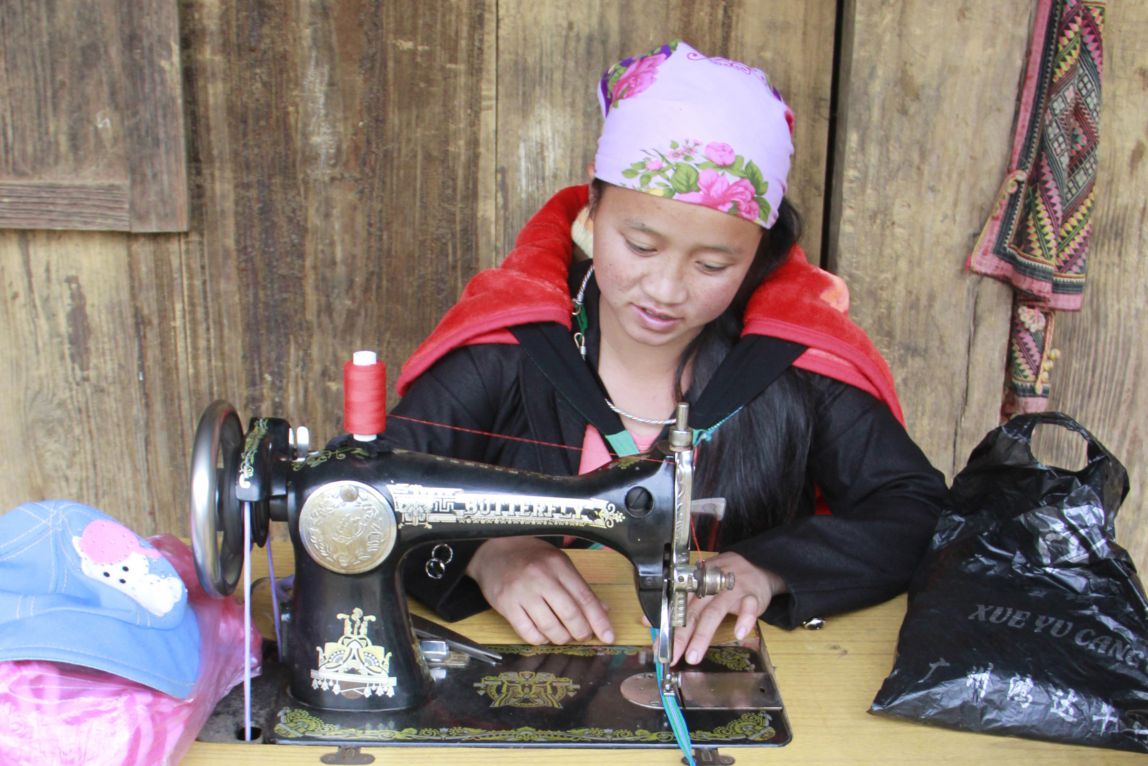Keeping the profession from the threads on the kget
In Van Ho, Long Phieng, Yen Son communes or Ngoc Chien, Chieng Hoa... the H'Mong people still maintain the traditional practice of growing and weaving flax. The flaxseed is sown in February - March, and will be harvested after 3 months. When the flax reaches the cake level, the people strip the leaves, dry them, and then strip the shell into a fiber. The spinning process requires skill: Each small spinning fiber is connected with the woman's soft hands without leaving a match. Then, the flax is boiled with kitchen ash and lime water, washed, dried many times to make it white and softer.
The sun-dried bunches of flax spread throughout the yard of Ms. Mua Y Mua in Co Long village (Van Ho commune) like a brilliant painting. Ms. Mua said: Lanh tree is the soul in the lives of the H'Mong people. Every year, I grow them to weave fabric,end dresses for my family and give gifts to my children and grandchildren. Flaxseeds are easy to grow but must be carefully cared for, the soil must be moist and the crops must be changed regularly to make the plants better.
For the H'Mong people, each stage of making a costume from flax contains meticulousness and pride. They not only wea fabric to wear but also wea the whole tradition, sending their souls into each fiber - the fiber connecting the past with the present of the highland village.
Symbol of ingenuity and perseverance
On a simple bamboo frame erected next to the house, Ms. Song Thi Chi in Co Cham village, Van Ho commune still wears fabric every day. Squeeze your arms and legs to move the strings in a familiar "two-one" rhythm. Ms. Chi shared: I have been learning weaving since I was 10 years old, and I have been in the profession for more than half a century now. Every year, I weave about 60 - 70m of flax, used to make dresses for relatives and sell them.
In Long Phieng commune, where 100% of the population is H'Mong, the lace weaving profession has been passed down from generation to generation. Mr. Lu Van Chung - Chairman of the Commune People's Committee, said: "The profession of growing flax and weaving not only helps people increase their income during the off-season but is also a symbol of the diligent and skillful virtue of the H'Mong woman. Flax fabric is durable, airy, non-stamped, and is popular for sewing traditional costumes.



To have a complete flax fabric, the craftsman has to spend months and go through many stages: From sewing, boiling, washing, weaving, to indigo dyeing and beeswax painting. Each stage is an art, requiring meticulousness and patience.
Ms. Giang Thi So in Pa Kha village, Long Phieng commune shared: Drawing bee wax is the most difficult step. The weavers have only created even patterns and features for a long time. After painting, the fabric is dyed indigo many times to make the color durable and the pattern clear. Each family has its own secret, everyone wants the fabric they wea to be durable and long-lasting.
Not only creating costumes, each flax fabric also reflects the soul, intelligence and talented hands of the H'Mong woman. In the midst of many changes in life, the image of mothers and sisters diligently around the curse is still a beautiful feature symbolizing the virtuous spirit of suffering and hard work of the people in the highlands.
Preserving cultural soul, opening new livelihood directions
Not only is lace weaving a traditional profession, it also has a profound spiritual meaning for the H'Mong people. Mr. Mua A Tanh, Long Luong commune, shared: The H'Mong people believe that the flax is the fiber that guides the departed soul back to its ancestors. Therefore, anyone who loses must have at least 3 sets of clothes made from flax. The children and grandchildren have also prepared ao khoai for their elderly parents to show their filial piety".
Nowadays, although industrial costumes are popular, in the H'Mong villages in the Son La highlands, many families still keep the profession as a way to preserve the origin. In Chieng Di 1 village (Van Ho commune), more than 50 households still maintain the frame, weaving to garnish clothes and serving tourists.
Mr. Vang A Thanh - Party Cell Secretary, Head of the village, said: "We encourage women and mothers with the skills to teach the younger generation, and at the same time coordinate with the commune to develop the linen weaving profession into a typical tourism product of the village".
Thanks to the combination with community tourism, the linen weaving profession has a new direction. products from flax - from rough fabric, dresses, to handbags, scarves, souvenirs - are increasingly popular with tourists. Ms. Mua Thi Xay, a brocade trader in Co Cham village, Van Ho commune, shared: "The flax fabric is durable and beautiful, and is ordered by many customers, even abroad. Each meter of flax fabric costs about 300,000 VND, while traditional dresses cost from 5 to 9 million VND per set.
In the midst of modern life, the spinning and weaving craft of the H'Mong people in the highlands of Son La still silently shines. The thin, sparkling threads are like a connection between the past and the present - between the hands of women and the soul of national culture. With pride, perseverance and the desire to preserve their identity, the H'Mong people are "weaving" a new future day by day in their traditional framework.











